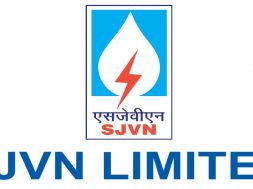
As India accelerates its transition to renewable energy, reliable grid supply remains a challenge in many regions. Lengthy outages and volatile voltage swings put household comfort and productivity at risk—especially in sun rich states. To help Indian homeowners take control of their energy future, Growatt is proud to introduce the SPE Series IP20 Hybrid Inverters: an all in one energy management hub that seamlessly blends solar conversion, battery storage integration, and smart load dispatch.
Tailored for Indian Conditions, this inverter provides seamless backup during outages. Frequent load‑shedding in tier‑II and tier‑III cities is no longer a headache. The SPE Series switches instantly to battery power, keeping lights, fans, and essential appliances running until grid power returns. This series also comes in flexible power ranges – 3.5 kW & 6 kW (SPE 3500–6000TL HVM‑G2): Ideal for compact urban homes or rural cottages, supporting up to 8 kW of PV input and – 8 kW & 12 kW (SPE 8000–12000 ES): Perfect for larger residences and small businesses it can be scaled up to 108 kW via parallel operation (single‑phase or three‑phase).
These inverters provide a diverse range of features for customer ease and smart energy management like:
Feed to Grid function: After this function is enabled, the inverter can set the solar export power and battery discharge power to grid based on user requirements. This feature helps meet utility export limits making your system compliant and also maximize revenue through net-metering and feed-in tariffs wherever allowed.
Grid Peak Shaving power: This feature allows users to set a maximum power limit for grid consumption and automatically switching to using solar and battery power to supplement the grid power. This helps to reduce the electricity bills by avoiding demand charges and high-tariff grid usage. This feature not only helps customers to avoid high demand charges and simultaneously helps in grid stability by reducing strain on the grid.
These inverters are designed for India’s climate. They are tested under high‑temperature (>50 °C), high‑humidity (up to 95 % RH), and wide voltage fluctuation scenarios, the SPE Series thrives across coastal, desert, and high‑altitude regions without infrastructure constraints.

Equipped with dedicated built-in BMS communication ports that includes CAN/RS485, the inverters maintain precise control over lithium battery operating parameters. The Battery Low Voltage Disconnect (BLVD) function automatically turns the non-critical loads on and off based on the battery’s state of charge (SOC), ensuring optimal energy management.
The SPE Series establishes a 24/7 energy command center via the ShinePhone App, enabling users to monitor real-time PV generation, household consumption patterns, and battery charge/discharge status. Integrated time-of-use algorithms autonomously optimize battery cycling schedules to align with dynamic electricity pricing, prioritizing stored energy deployment during peak-rate periods. This adaptive management protocol maximizes solar self-consumption potential while systematically reducing grid dependence. The intelligent energy dispatch strategies are available as below:
Solar First (SOL): Prioritizes solar energy to power loads first and then charge batteries when sunlight is available. This feature helps the system owners save money by using free solar energy before anything else and keeps the battery ready for later use.
Solar and Utility Power (SNU): Automatically switches between solar and grid power based on availability. This feature ensures users have peace of mind by always keeping the power on, without you needing to do anything.
Utility Power First (UTI): Prioritizes grid power to power loads. Solar and Battery will power loads only when utility power is not available. This feature is best for areas with frequent outages, ensuring your important devices stay on even when the grid goes off.
Solar and Battery Power (SBU): Prioritizes solar energy to power loads first. If solar is not sufficient, battery will supply the power to the loads at the same time. Utility powers the load only when battery voltage drops to low-level warning voltage. This feature helps cut electricity bills by using solar and stored energy as long as possible, with the grid as a backup.
Solar and Utility Power (SUB): Prioritizes solar energy to power loads first. If solar is not sufficient, utility will supply the power to the loads at the same time. Battery only powers the load when solar is not sufficient or when there is no utility power. This feature makes sure your battery lasts longer while using solar power every day to reduce grid usage.
By aligning discharge schedules with time of use tariffs under India’s smart meter rollout, homeowners can maximize self consumption and curb peak hour bills.

The SPE Series is perfectly suited for India, offering compatibility with net‑metering and subsidy schemes under PM–KUSUM and various state solar policies to help you capitalize on government‑backed incentives, while its modular design lets you start small and effortlessly expand capacity in parallel as your household’s energy needs grow—eliminating the need for separate battery inverters or external charge controllers and delivering a true one‑stop solar‑plus‑storage solution.











